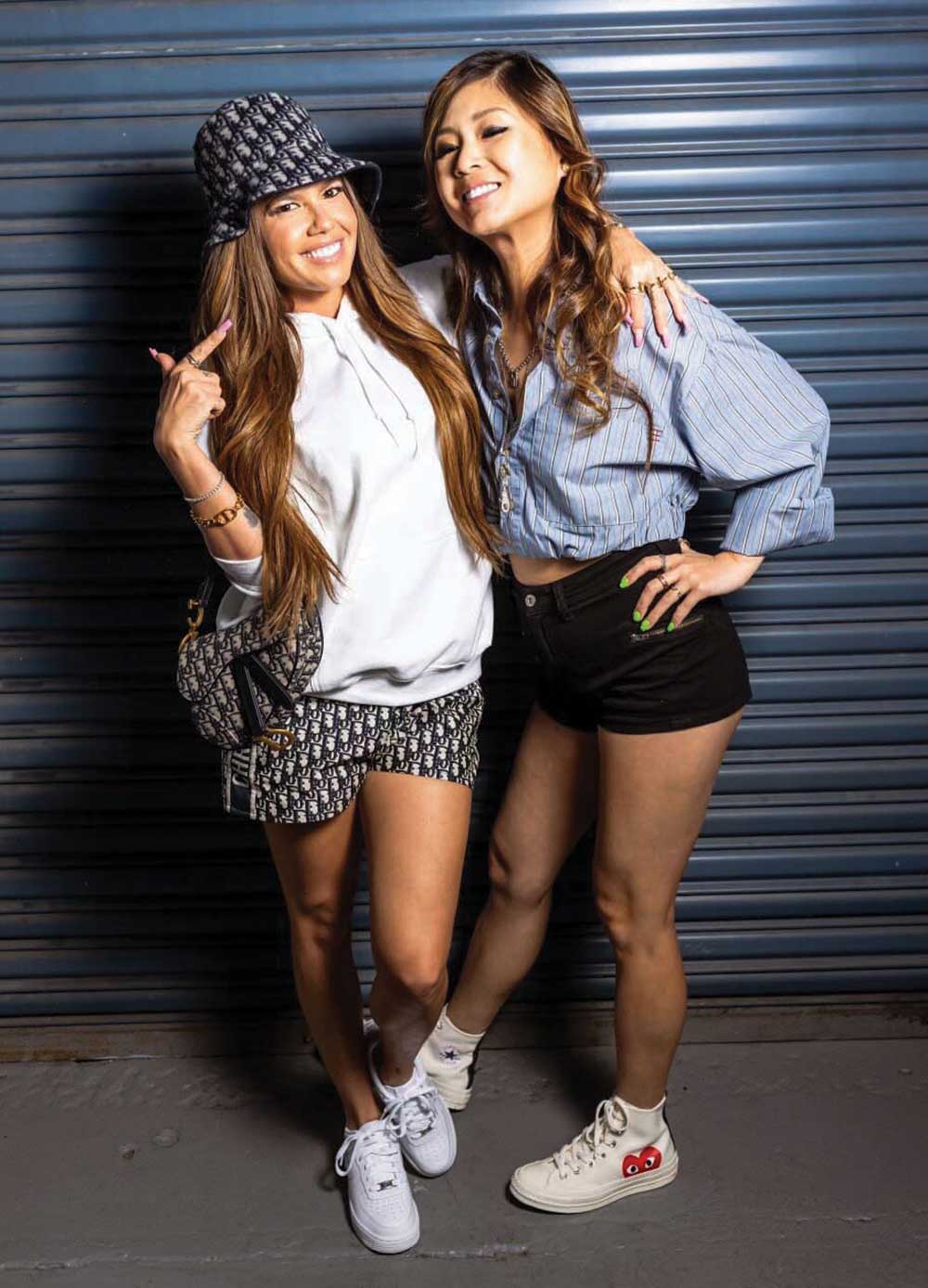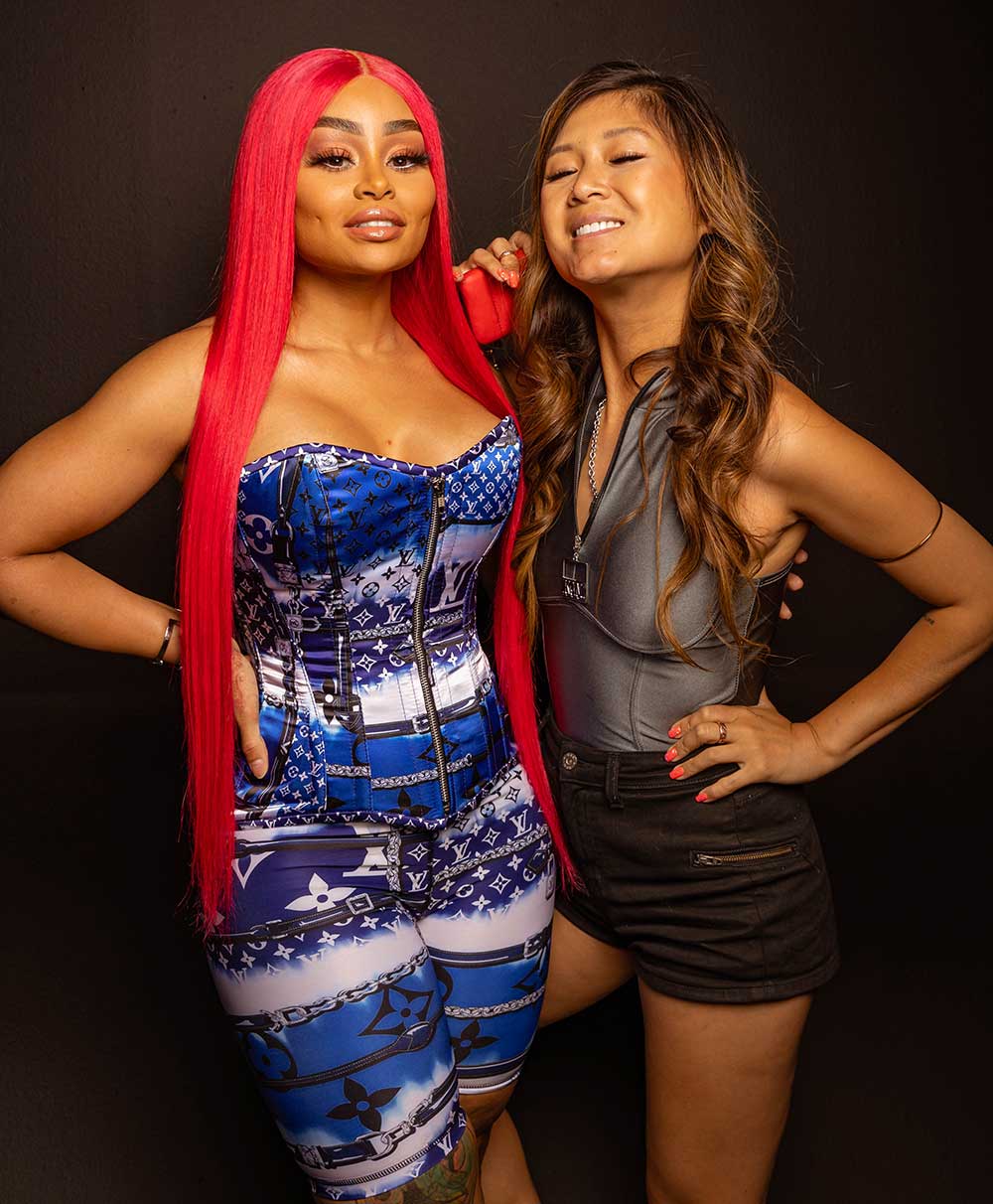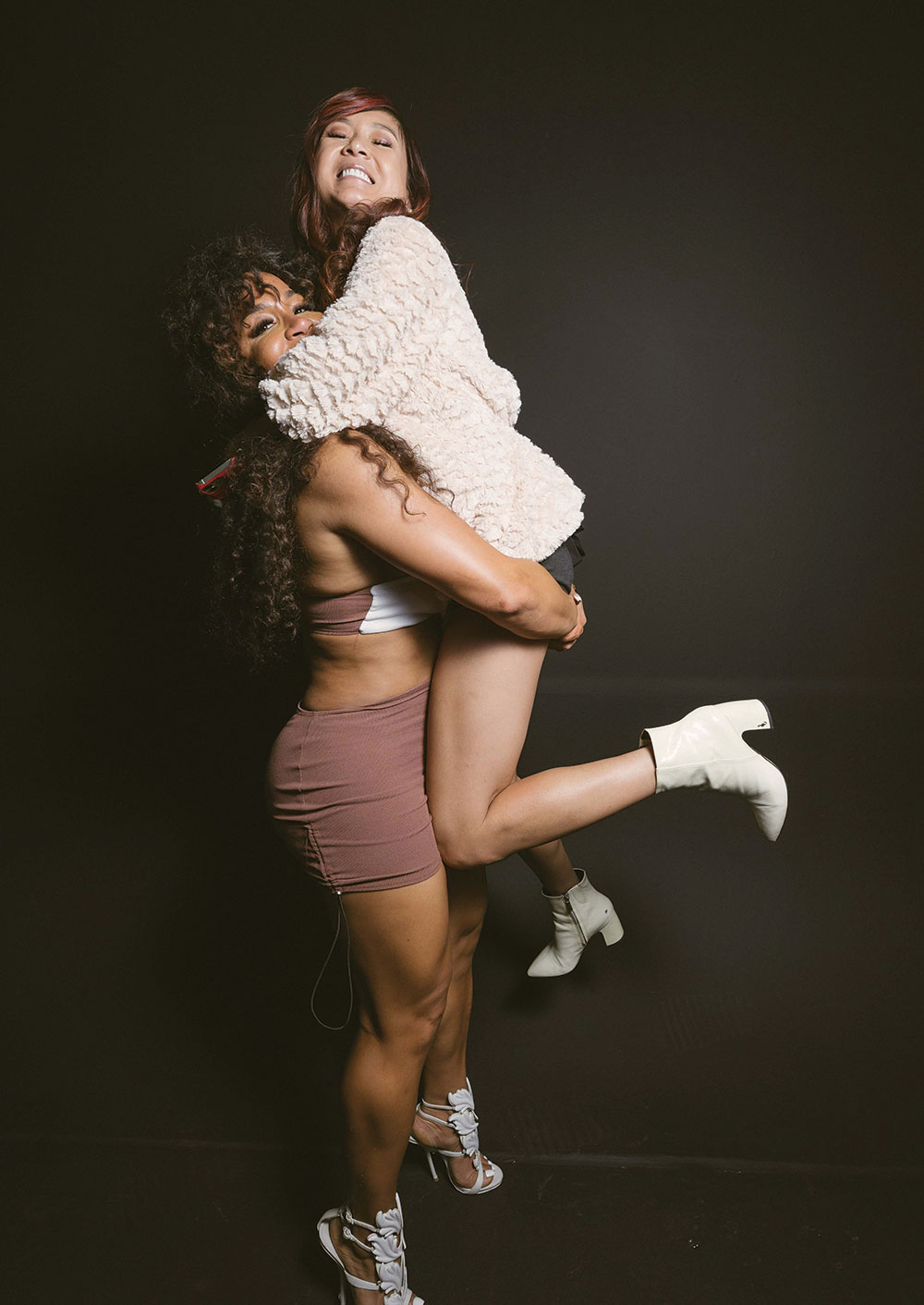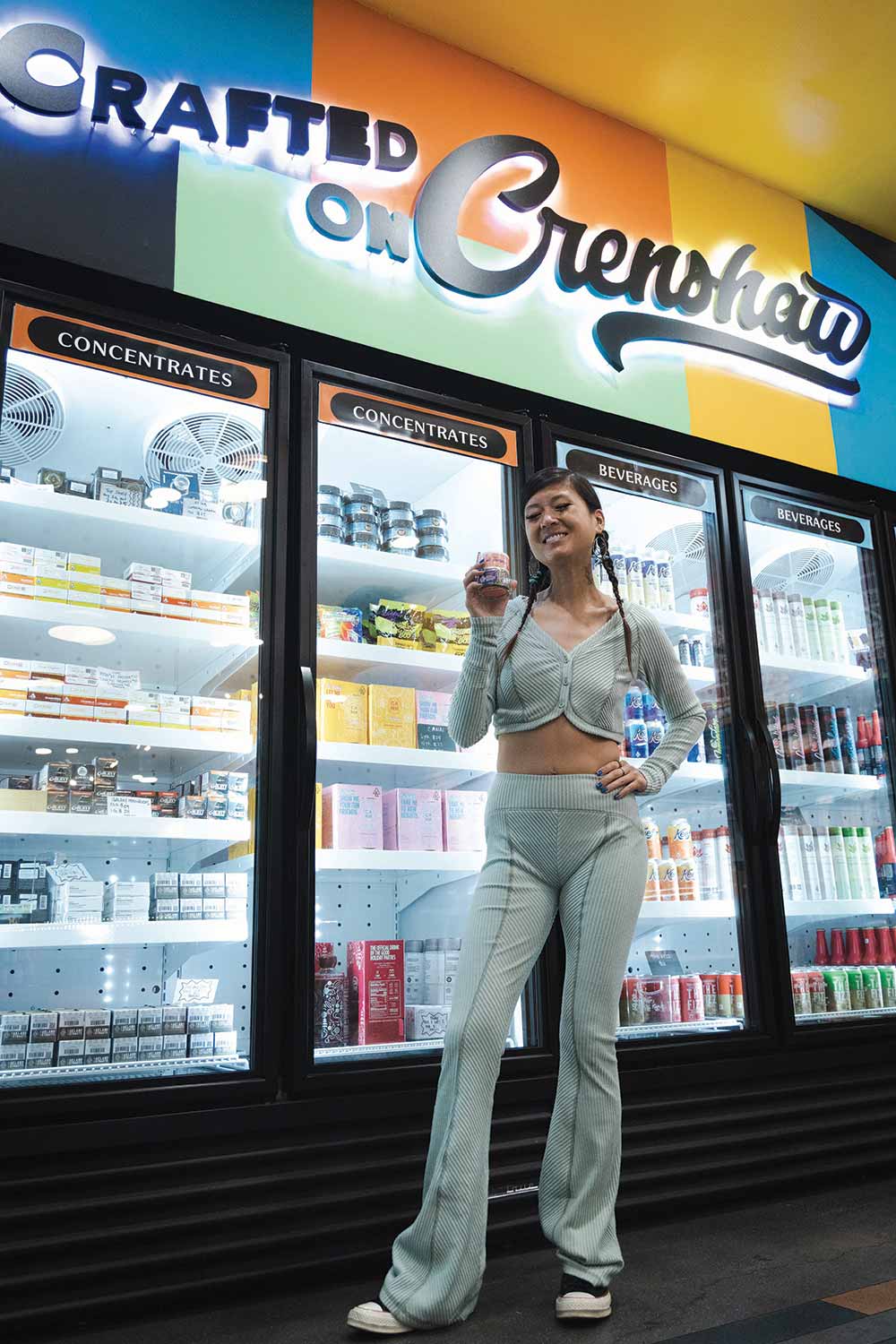I’ve been picking up dime bags and smoking out of pipes in the car since high school. Growing up with traditional Chinese-born parents, cannabis was extremely prohibited—not unlike the stigma of cannabis we’re trying to break. Over the years, my mom had collected more than seven glass pieces and who knows how many eighths of weed. Every time my stash was confiscated, I’d just go out and buy more. No biggie.
Throughout the rollercoaster that is my life, cannabis keeps me calm and relaxed while elevating my vibration, no matter the situation. Cannabis eases my chronic insomnia and is a true game-changer when it comes to managing mood swings. In areas where traditional Western medicine has fallen short, cannabis often steps in with her natural healing powers. Having been diagnosed with ADHD, bipolar disorder, depression and anxiety, as well as addiction, marijuana has been pivotal in managing my mental, physical and spiritual health.
It’s no secret the cannabis industry is booming, growing so rapidly that global sales are expected to reach nearly $150 billion by 2031. Last year alone, the legal marijuana market size was valued at $16.7 billion, with a compound annual growth rate (CAGR) north of 25% from 2023 to 2030. Not too shabby for a plant that only started on the path to legalization in 1996. According to the Seattle-based cannabis data firm Headset, Gen Z females lead the pack in year-to-year sales from 2020 as the fastest-growing consumers of legal marijuana—151% compared to any other group. Gen Z (born after the year 1997) men followed closely behind, at 118%. They also found that the growth of female consumers in the US is outpacing that of male consumers, at 55% versus 49%, respectively.

This begs the question: Could the future of cannabis really be female? While the cannabis industry has always been run by men, women currently make up approximately one-third of buyers. A study by Bain & Co. found wellness to be the main reason women use cannabis, while men reported using marijuana for social situations.
“The reason Gen Z women are consuming more cannabis is multifaceted,” says Tammy Pettigrew, a cannabis educator. “For starters, healthcare in this country is unaffordable, especially for younger adults, and cannabis serves as a cheaper alternative to some of the pharmaceutical costs. Secondly, Gen Z women are coming of age in a time where cannabis is much more normalized and the “reefer madness” scare tactics don’t really work on them. Older generations had to break the law to access cannabis and now you can buy products in all types of formulations and non-threatening packaging. You can even go to legal consumption lounges across the nation.”
I remember getting my med card during college at the University of California—Santa Barbara. I walked into the office to meet with the doctor (who had no shoes on) and described exactly why I needed to use cannabis medicinally. While insomnia was the main issue at hand, the plant also helped me cope with the stresses of life during college, such as upholding a passing GPA, working part-time to pay rent, easing my anxiety and, let’s be honest, curing hangovers.

Today, all you need is to be 21 and you can enter any dispensary to shop recreationally. Amazing. What blew my mind even further was when music executive and manager Steve Lobel opened The Heavenly Center, a rehab facility in Studio City, CA that uses cannabis to help addicts get sober. Genius. To date, no teens or adults have passed away from overdosing on weed. Not one.
But there’s still work to do. Even now, a stigma remains around cannabis. I’m a 32-year-old journalist and on-camera host based in LA. While most people who recognize me know me from interviewing their favorite artists, I’ve somehow landed in this space of being a “cannabis influencer” and it’s been the most fruitful gig in terms of community and career fulfilment.
Working in the cannabis industry fills me with gratitude. Brands have shown me so much love, whether it’s gifting me with product, hiring me for campaigns or sponsoring my podcast series, Shirley’s Temple, which is meant to be a safe space for open conversations while promoting mental health awareness. I launched the show during the pandemic, with Trippie Redd being a guest on my second-ever episode. We started the show by gifting him weed, although he came with a Ziplock bag full of pre-rolled Backwoods. Since then, I’ve been able to smoke with celebrities including Too Short, G-Eazy, B-Real, Doggface, Ricky Williams, Mozzy, Gangsta Boo and YBN Nahmir, among others.

This amazing industry has really opened up the floodgates of opportunity for the new generation: Not only can you consume and enjoy the plant, but you can also make a living off it. MJBizDaily’s third edition of the Women & Minorities in the Cannabis Industry Report reveals that the weed industry currently has 41.9 percent women in general employment positions, compared to the 46.8 percent national average of US businesses employing women.
Females are now actively stepping up their involvement within cannabis businesses, excitingly standing their ground as cannapreneurs, high-level executives and leaders in the space—constantly striving for greater representation, advocacy, unity and equality.
As a woman who took initiative, stepped outside my comfort zone and boldly entered the cannabis industry with an open mind and open arms, I’m confident an industry led by women will be the new normal. According to the research, 19.9 percent of national cannabis businesses are owned by women. In fact, Nevada is the only state where women have a higher ownership rate in cannabis companies than all businesses in the broader economy. That’s called progress.

The beauty lies in the fact that female consumers are more likely to gravitate towards and support women-owned or women-led businesses. And let’s be honest, a woman’s touch on anything is destined to be fostered with love, affection and care. Females are nurturing by nature and there’s something about their presence that amplifies in any industry.
Directly in line with the rise in female consumers, women are more inclined to conduct research on brands, strains and products, helping them make strategic decisions in purchasing, marketing, packaging and overall branding. With that comes education and building community, in hopes of empowering more women to step up to the plate. Cannabis educator Pettigrew, who’s also widely known as the “Cannabis Cutie,” says she sees the future of cannabis expanding into more markets with more innovation.
“Right now, the US is severely behind when it comes to the research of cannabis, but I think once federal legalization hits that, we’ll step it up and be a global contender,” she says. “That puts women in position to really dominate, and I’m hoping to see us step up with ideas and entrepreneurial spirit.”
This may be a good time to bring up that only female cannabis plants can produce potent THC buds. That’s right, just like only women can reproduce as humans, only female plants can produce the very chemical that gets you high. Male plants only produce pollen sacs, which are destroyed in the pollination process.

A cannabis future led by passionate, dynamic young women? With the recent rise in female Gen Z consumers, the possibilities are seemingly endless. A tip for all women entering this still male-dominated industry: Definitely do your research. Extensive data and resources online exist for all iterations of the cannabis industry. Go forward without fear, ask all the questions and, yes, shoot your shot. Truth is, I’ve failed many more times than I’ve succeeded, but what journey is worth taking without risk?
Today, I’m pondering launching a cannabis-friendly movie theater. Anyone want to join in on the fun? I have the feeling a Gen Z powerful woman may be just what my business—and the entirety of the cannabis industry—really needs.
This story was originally published in issue 48 of the print edition of Cannabis Now. Read it now on the Cannabis Now iTunes app.
Source link
#Gen #Women #Cannabis #Love #Story